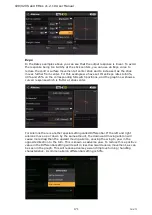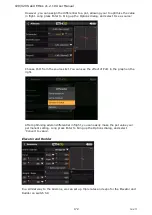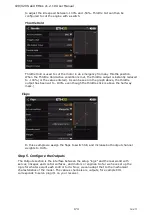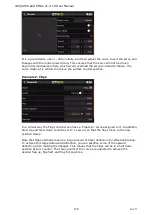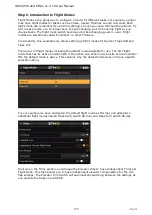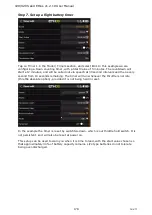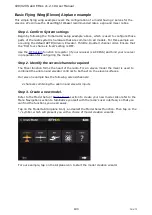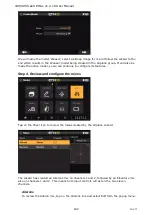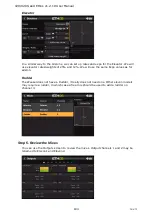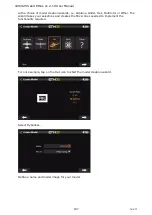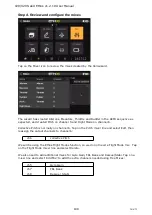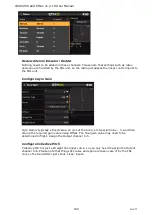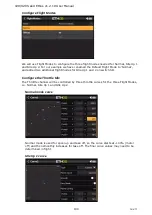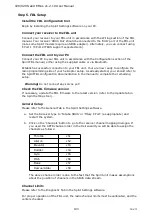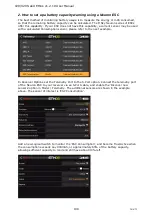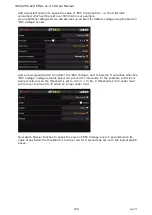
X20/X20S and Ethos v1.2.10 User Manual
The example above shows that full right aileron has been applied, so channel 1 is at
75%, while the left down-going aileron is at 72% due to aileron differential.
This example shows that full right aileron has been applied as well as full down elevator
so channel 1 is at 75+25 = 100%, while the left down-going aileron is at 72-25 = 47%
due to aileron differential.
Step 6. Configure the maximum servo throws
Finally the actual maximum servo throws should be configured to set the recommended
deflections and to avoid exceeding mechanical servo limits. The maximum Weasel
recommended throws are 25mm (aileron) + 10mm (elevator) = 35mm. Apply full aiding
as well as opposing aileron and elevator inputs, then set your maximum surface
deflections ensuring that servo or linkage limits are not exceeded.
Min/Max
The Channel min and max settings are ‘hard’ limits, i.e. they will never be overridden.
They should be set to avoid mechanical binding. Note that they serve as gain or ‘end
point’ settings, so reducing these limits will reduce throw rather than induce clipping.
Note that the limits default to +/- 100.0%, but may be increased here to +/- 150.0%
if required.
Curve
Curves are a quicker and more flexible way of configuring the center and min/max
limits of the outputs, and you get a nice graphic. Use a 3-point curve for most
outputs, but use a 5-point curve for things such as the second elevon, so you can
synchronize the travel at 5 points. When using a curve it is good practice to leave Min,
Max and Subtrim at their 'pass thru' values of -100, 100 and 0 respectively (or -150,
150 and 0 if using extended limits).
185
rev 3
Summary of Contents for TANDEM X20
Page 1: ...X20 and Ethos User Manual...

